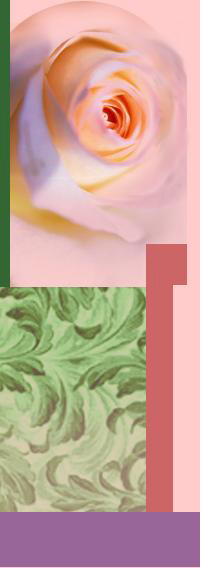Marma Therapy
Marma therapy is a science
of touch and part of the Ayurveda system of medicine. Marma therapy stimulates sensitive points on the body that govern the
flow of energy and the function of the body's organs.
The philosophy indicates
three major marma points -- the crown of the head, the center of the chest or the heart, and the pelvic area. Touch is considered
to be the most powerful of the body's five senses when it comes to healing. Practitioners do use therapeutic marma oils that
are applied to specific points in order to treat specific symptoms.
Being a relatively new
form of therapy, marma therapists are not common in the western world; but the field is becoming popular.
Polarity Therapy
Polarity therapy involves
light touch to areas of pain and stress. The idea of polarity was developed by Randolph Stone, an Austrian osteopath, naturopath,
and chiropractor, who taught that energy flows freely in nature but, when stagnated, it precludes disease. Healthy flow involves
the physical body as well as the emotional.
After sixty years of
research, Dr. Stone combined the studies of acupuncture, herbology, massage, reflexology, shiatsu, and zone therapy into his
philosophy of polarity therapy. He used the term "polarity" to describe qualities of magnetic energy that circulate throughout
the body. When this energy flows in a healthy manner, it is charged with qualities of attraction and repulsion and, therefore,
is drawn toward positive and negative poles.
A practitioner's hands
provide an opposite pole. When pressure is applied, his energy stimulates movement in the patient, achieving wellness in the
body, mind, and spirit. Practitioners use subtle manipulations and techniques that hold, rock, or simply touch specific points
in order to conduct a healthy energy current toward a more vital body and clearer mind.
Credentialing is awarded
after a 615-hour training course from an American Polarity Association accredited school. Graduates are then allowed to use
the initials indicating RPP (Registered Polarity Practitioner) and are usually members of the allied healthcare profession.
Reiki
Reiki involves various
forms of light touch to relieve pain and stress, promoting deep relaxation and the release of harmful emotional patterns.
This form of healing involves the four levels of a human being: physical, emotional, psychological, and spiritual. It is believed
that the Tibetan Buddhists practised this form of healing 2500 years ago, but it was a Christian minister from Japan who revived
the practise in the late 1800's.
The instructor acts as
a transmitter of universal life energy, receiving the energy from the environment, and channeling it into another, using certain
hand movements that lightly touch on specific parts of the body. It is believed that in so doing, old energy is released being
replaced by revitalizing new energy. It has been an effective approach for the terminally ill, who are seeking a peaceful
transition.
Credentials involve three
levels of practice and experience to achieve the status of Reiki Master (RM).
Therapeutic
Touch
Therapeutic touch uses
various forms of light touch to relieve pain and stress and to restore the flow of the body's natural healing abilities. This
approach has its origins in a number of ancient healing practices, including the "laying on of hands," which many religions
incorporate into their beliefs and practices. Modern techniques were developed in the 1970's by Delores Krieger, PhD, RN and
a spiritual healer, Dora Kunz.
Therapeutic touch is
based on the principle that an individual's field of energy exists beyond the surface of the skin by two to four inches. A
practitioner will assess this field and repattern it to promote healing and the restoration of balance within the body.
A practitioner is usually
a licensed healthcare professional who has had additional training in this area. Nurses, using therapeutic touch, are particularly
adept at helping their patients recover faster than is considered normal.
